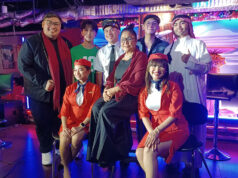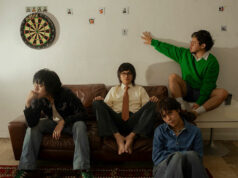Best of Piedmontese wines in full display
GRANDI LANGHE is a very important regional bi-annual event in Italy that is exclusively for wine trade professionals, made up of wine buyers, wine press people, sommeliers, and wine business owners, both local and international. It is organized by the Consorzio di Tutela Barolo Barbaresco Langhe e Dogliani and the Consorzio di Tutela del Roero with its fourth edition just recently concluded — showcasing once more the best of Piedmontese wines. This year, just like its previous staging in 2017, the event was also prearranged in association with Albeisa, the organizer of the Nebbiolo Prima, to ensure that the Grandi Langhe come right after the Nebbiolo Prima.
While Nebbiolo Prima is a press-only event focusing on only Nebbiolo wines from the DOCG (Denominazione di Origine Controllata e Garantita) regions of the more renowned Barolo, Barbaresco, and the newer Roero, Grandi Langhe covers the entire wine portfolio of the wine rich and versatile Langhe area in the province of Cuneo in Piedmont, northern Italy. I was very fortunate to attend my very first Grandi Langhe event.
CHANGES TO GRANDI LANGHE
Aside from the change in dates, moving up from April to January this year to most likely complement Nebbiolo Prima, Grandi Langhe also made tweaks to improve its offering. The event has been condensed to two days from previous three, and the venue was reduced to one, the Palazzo Mostre e Congressi in magical Alba. Previously, the event was held in different locations, with the wines also subdivided via regions. Now all of the best that Piedmont wines have to offer were in one location, with booths at Palazzo Mostre e Congressi set-up according to the municipality of origin of the wineries.
Two hundred and six wineries participated with over 1,000 wines showcased. Most of the wineries in attendance had family members manning the booths, which made it even better during the interaction and tasting of the wines.
Aside from the new vintages of top Nebbiolo wines of DOCGs Barolo, Barbaresco, and Roero, others presented were the wines made from other Piedmont varietals like dolcetto, barbera, pelaverga, freisa and the region’s most important white varietal, arneis. Also present were some international grapes like chardonnay, riesling, sauvignon blanc, and pinot noir, which is called pinot nero here.
While there were easily over a dozen DOC and DOCG regions, my interest other than the Barolos and Barbarescos (which I will cover in this column in the coming weeks via my Nebbiolo Prima experience), were the beautiful wines from Roero Arneis DOCG and the surprisingly amazing sparkling wines from the Nebbiolo d’Alba DOC (Denominazione di Origine Controllata).
ARNEIS FROM ROERO
Roero is a vineyard area in the north-east of the province of Cuneo in Piedmont. Roero became a DOC region in 1985 and was promoted to a DOCG 20 years later in 2005. The red Roero DOCG wines are made from 100% nebbiolo grapes and are part of the regular nebbiolo prima. Red Roeros are known for being good value wines compared to their more illustrious neighboring DOCGs of Barolo and Barbaresco. Arneis, however, is the most common white wine varietal of Roero, and it is the varietal in the white DOCG counterpart of the region. Arneis can also be produced under Langhe DOC if not 100% coming from Roero.
Arneis is one of those varietals that can grow on you. Arneis wine is not as aromatic as the other popular whites like Chardonnay or Sauvignon Blanc, but it has its own appeal with a more subtle nose that shows white peach, green vegetables, and white flowers. On the palate, the wine always shows freshness, nice citrus, mineral notes and is quite dry and crisp.
I tasted a lot of very good Arneis wines at Grandi Langhe, including the following: Cascina Chicco Roero Arneis Anterisio 2018 (very fresh, clean, persistent peach finish), Marsaglia Societa Agricola Semplice Roero Arneis Serramiana 2018 (well-structured, pineapple, honeyed at the end), Tenuta Carretta Roero Arneis Cayega 2017 (crisp, green apple, minerals), and Giacomo Vico Roero Arneis 2017 (a burst of citrus, nice flintiness).
Based on the export price given to me, and as a small importer myself, a Roero Arneis should be priced between P1,000/bottle to P1,500 per bottle in our country — not cheap at all. In Manila, I know that Zen Asia carries Vietti, one of my favorite Barolo brands, and Vietti makes a very good Roero Arneis too, but this beautiful varietal is sadly more of a rare sighting than the norm among available wines in our market.
NEBBIOLO IN A NEW BUBBLY LIGHT
Nebbiolo remains the unbeatable superstar varietal of the region. According to the seminar I attended at the event, 37% of the entire Langhe wine region is planted to nebbiolo, followed by 27% of dolcetto, 15% of barbera, and the balance among all the other varietals combined. The previewed wines of the Barolo 2015 and the Barbaresco 2016 proved once more how amazing the Nebbiolo wines can be. But what really caught my attention was the Nebbiolo d’Alba DOC sparkling wines which, when done classic method, a.k.a. methode champenoise, can really be gorgeous.
Nebbiolo d’Alba is a DOC encompassing a larger area around the town of Alba. The DOC was bestowed in 1970, and was named after the nebbiolo grape from which they can only be made from. Instead of just still Nebbiolo wines, this DOC is now making arguably some of Italy’s best sparkling wines.
I am a bigger fan of Franciacorta than I am of Prosecco and the Philippines’ favorite sparkling wine of all time, Asti Spumante. The reason may be because Franciacorta (DOCG from Lombardy) is more of a clone of Champagne, made with the same methode champenoise and even the use of same varietals of chardonnay (majority) and pinot noir, but with pinot blanc instead of pinot meunier. Now, being a self confessed Nebbiolo lover, a champagne-style sparkling wine made with 100% nebbiolo is certainly not only interesting but also quite intriguing.
While admittedly I may have encountered the Nebbiolo d’Alba spumante in previous trips to Alba, it was in this particular trip to Nebbiolo Prima back-to-back with Grandi Langhe that I got my opportunity to taste and understand a bit more of this version of Italian champagne. During the Nebbiolo Prima, I got to taste these bubbly Nebbiolos during our evening dinners with wine producers. At one of the dinners, I was lucky to be in the same table as Gianluca Viberti, the avant-garde owner and wine maker of 460 Casina Bric. Gianluca is as passionate of a wine owner as I have ever encountered and it was enthralling for me to listen to him talk about his proud creation, the Nebbiolo Metodo Classico Rose Brut Nature. This nice rose de noir sparkling wine had a very alluring bright pink salmon color, relentless effervescence, flowers, violets, fresh strawberries, and was dry and super crisp at the end.
The 460 Casina Bric Nebbiolo Rose Brut Nature only comes in magnums and is also packaged in individual wooden box.
From my small sample size, the taste of Nebbiolo sparkling wines were quite different from champagnes, and indeed the Nebbiolo charm had transformed elegantly into this sparkling wine version. I am extremely impressed, but, having tasted just a handful of Nebbiolo d’Alba sparkling wines, it is hard to say how far this sparkling wine version will go.
Production of the Nebbiolo d’Alba sparkling wine is also still very tiny at the moment. Nebbiolo d’Alba sparkling wines can come in either Metodo Classico or the Martinotti method a.k.a. Charmat. Prices of Nebbolo d’Alba sparkling will not be cheap (priced just below Champagnes), but Nebbiolo wines are never low priced to start with.
For my next column, I will start my humble review of the Barolo, Barbaresco, and Roero wines I blind-tasted at the Nebbiolo Prima. More from Piedmont is coming.
The author has been a member of the Federation Internationale des Journalists et Ecrivains du Vin et des Spiritueux or FIJEV since 2010. For comments, inquiries, wine event coverage, and other wine-related concerns, e-mail the author at protegeinc@yahoo.com. He is also on Twitter at twitter.com/sherwinlao.



